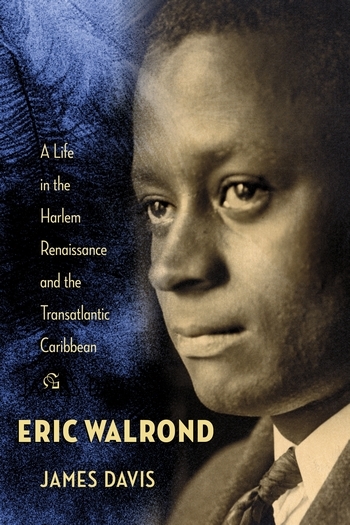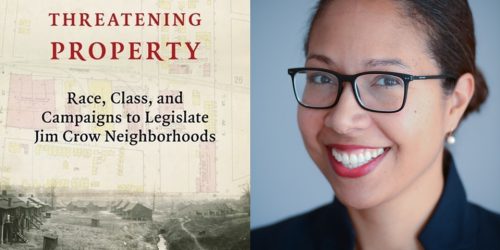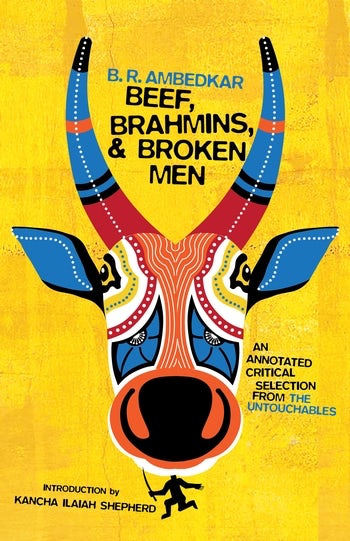An Interview with James Davis, Author of "Eric Walrond"
The following is part 1 of our interview with James Davis, author of Eric Walrond: A Life in the Harlem Renaissance and the Transatlantic Caribbean
Question: As you describe in your book, Walrond was very much at the center of the Harlem Renaissance at the time but history has largely forgotten him at least until recently. What explains his disappearance?
James Davis: Walrond’s departure from the United States partly explains his disappearance. After 1929, he lived the rest of his life in France and England, and he did not make a great effort to maintain ties with the Harlem community. Several people who sought to contact him had trouble locating him, so there is a sense in which Walrond was responsible for his own obscurity.
He was also estranged from his family, so no one was taking care that papers and manuscripts were preserved. But there are other important factors. Remember, many writers we think of as prominent New Negroes were actually “rediscovered” after protracted neglect. The poet Countée Cullen was for much of the twentieth century not well known or admired, the novelist Nella Larsen sank into obscurity, the work of Claude McKay and Jean Toomer was neglected, as were the careers of several black women poets, and perhaps most famously, the extraordinary talent of Zora Neale Hurston was only recuperated through the efforts of Alice Walker and others. It was only a matter of time before someone reassessed Walrond’s career and writing, and in fact, that process really began in the 1980’s with Robert Bone, a scholar of African American literature. His efforts to collect Walrond’s essays, articles, and stories and to reconstruct his career led in turn to Louis Parascandola’s publication of two anthologies of Walrond’s writings.
Q: Likewise, why do you think there’s been a resurgence of interest evident not only by your book but by the recent reissue of Tropic Death?
JD: I think two overlapping developments contributed to the resurgence of interest. One is the so-called transnational turn in American studies, an effort to revise the way we talk about literary and cultural history by situating the U.S. in the context of the plural Americas. The effect of this shift has been pronounced with respect to accounts of the Harlem Renaissance, which by now everyone knows was never strictly a New York phenomenon anyway. U.S. scholars have written brilliantly in recent years on the Caribbean dimensions of the Harlem Renaissance, including Michelle Ann Stephens, Brent Edwards, Winston James, and Lara Putnam. As well, Caribbean literary studies has enjoyed a kind of renaissance of its own, not only in the U.S. but also and especially in the U.K. and the Caribbean itself. Because Walrond’s best-known work, Tropic Death, is set entirely in the Caribbean, where he was born and raised, an argument can be made for his place in the region’s rich literary history.
Q: How does Walrond’s life and writing change the way we think about the history and character of the Harlem Renaissance?
JD: Some of our conventional wisdom about the Harlem Renaissance is reinforced by Walrond’s life and writing, including the emphasis placed on racial pride and expressions of militancy and the faith in the arts as a vehicle for social change. But Walrond also challenges some received ideas about the era. His work reminds us, first of all, that nearly one-fourth of the population of black New York in the 1920s was foreign-born. This is a striking fact, since we tend to think of the Harlem Renaissance involving African American migration from the rural South to pursue economic opportunities up North, bringing their cultural practices to new urban contexts and transforming the race in the process.
Accurate as far as it goes, this is nevertheless an incomplete account of the people and forces that created black Harlem and shaped the “New Negro” movement. Even W.E.B. Du Bois, among the most astute chroniclers of black history, suppressed the Caribbean dimensions of the movement, not because he despised the foreign-born (in fact, he praised what he saw as the thrift and industry of West Indians), but because the political commitments of certain Caribbean newcomers were antithetical to the vision of race progress he formulated with the NAACP. These included Marcus Garvey, most famously, but also lesser-known Caribbean immigrants such as Hubert Harrison, W.A. Domingo, and Cyril Briggs, whose radical activism and writing departed from the ideals that Du Bois and others advocated. Both migrants and immigrants alike contributed to the “New Negro” movement, Walrond’s career reminds us, sometimes struggling over its principles and direction, but also yielding an extraordinary diversity of voices and political perspectives, some of which has been lost in the “domestication” of Harlem Renaissance history.
Q: What made Walrond’s writing so distinct? In what ways was it similar and/or different from other Harlem Renaissance works?
JD: The most striking thing about Walrond’s fiction is its sound, its stunning depiction of the voices of non-white Caribbean people. By voices I mean the viewpoints they articulated but also the ways in which they expressed themselves, their sonic quality. These voices had been, if not excluded from serious fiction, then marginalized or derided in caricature. Of course, some of Walrond’s peers wrote in dialect, including Langston Hughes, Zora Neale Hurston, or Jean Toomer, and like Walrond they too risked being interpreted as narrow “regionalists” or as perpetuators of stereotypes, but what distinguished Walrond’s fiction was its tremendous ambition to represent the polyphonic quality of the Caribbean during its fitful entrance into twentieth century modernity. So for example, one hears characters newly arrived in Panama from the West Indies, two Barbadian women worrying over the “fire hags” that haunt the canebrakes, a prim Guyanese matron chastising her maid, a Barbadian laborer confronting the U.S. marine who oversees a Canal Zone work crew, or a Trinidadian girl who works “obeah” to thwart her wayward boyfriend.
Walrond’s commitment to rendering their speech on the page—and thus rendering the experiences their speech expressed—was so thoroughgoing that his sentences can be difficult to parse. He was also very much a modernist in his prose style, so that plot and exposition often seem subordinate to imagery, atmospherics, and other displays of technical virtuosity. Some have therefore associated him with the trend in Anglo-American modernism toward “difficulty”: compression and a deliberate flouting of syntax at the sentence level coupled with irony and an avoidance of sentimentality in the narrative. However, I believe the difficulty of Walrond’s fiction is not just an experiment with a fashionable New York prose style but the deliberate expression of a multiply displaced West Indian, simultaneously insisting that the Caribbean be heard yet refusing the presumptuous injunction of the global North that it render itself up for easy consumption.







